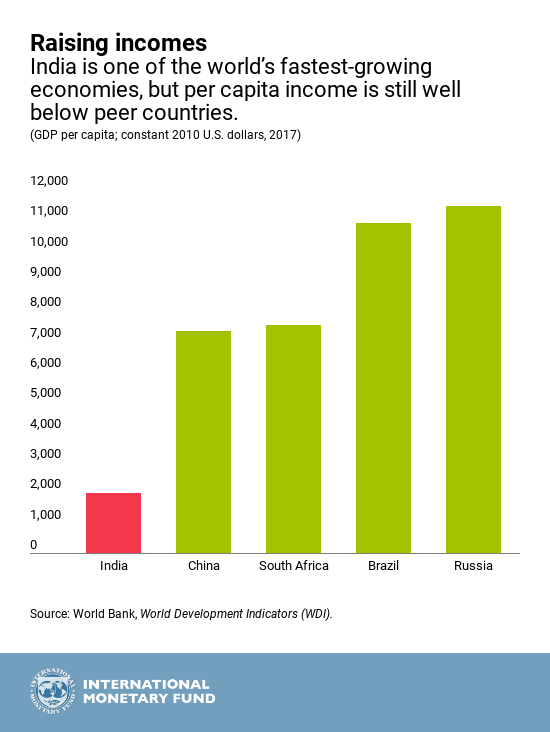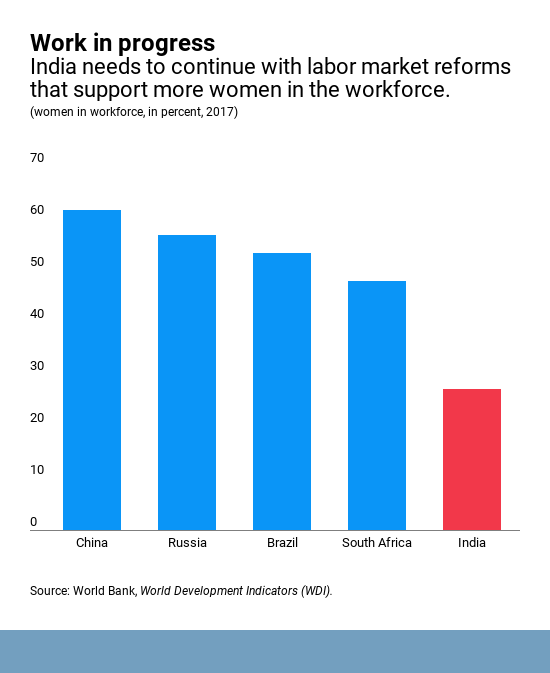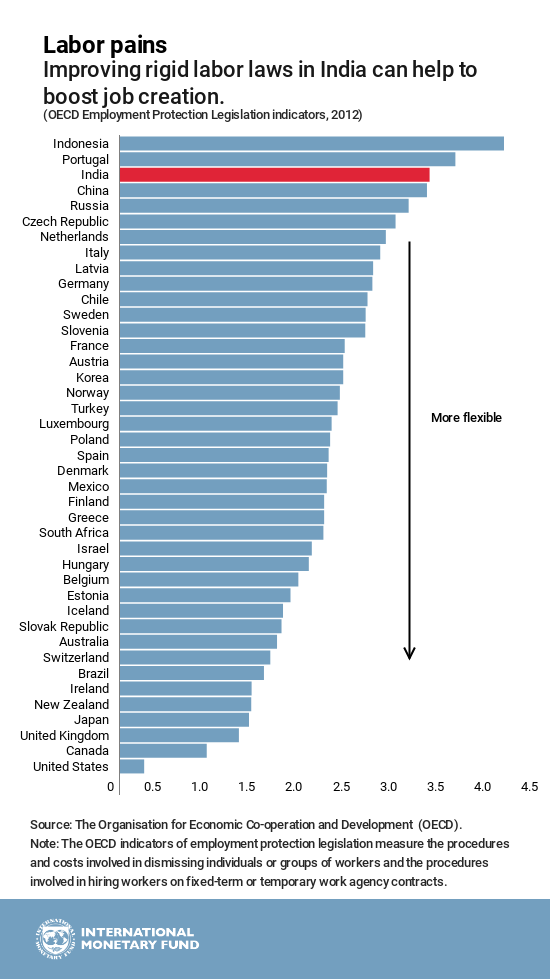
Women wait for a train in Mumbai, India. Implementing labor market reforms in the country can support more women in the workforce (photo: Xinhua/Sipa USA/Newscom)
India's Strong Economy Continues to Lead Global Growth
August 8, 2018
India’s economy is picking up and growth prospects look bright—partly thanks to the implementation of recent policies, such as the nationwide goods and services tax. As one of the world’s fastest-growing economies—accounting for about 15 percent of global growth—India’s economy has helped to lift millions out of poverty.
But to sustain rapid growth and raise incomes for the country’s 1.3 billion people, India will need to build on the success of its reforms, the IMF said in its annual assessment of the Indian economy.
Related Links
IMF Country Focus interviewed Ranil Salgado, the head of the IMF team for India, to discuss a few of these key recommendations, as well as the report’s overall findings.
Looking at this year’s economic assessment, you’ve likened the Indian economy to an elephant starting to run. Can you explain what you mean?
India’s economy is gaining momentum, thanks to the implementation of several recent noteworthy policies—such as the enactment of the long-awaited goods and services tax, and the country opening up more to foreign investors. Therefore, we expect economic growth to pick up to about 7.3 percent for fiscal year 2018/19—meaning the year that runs from April of 2018 through March 2019—from 6.7 percent in the year prior. Meanwhile, inflation has edged higher, in part due to a reduction of economic slack.
To sustain and build on these policies and to harness the demographic dividend associated with a growing working-age population (which constitutes about two-thirds of the total population), India needs to reinvigorate reform efforts to keep the growth and jobs engine running. This is critical in a country where per capita income is about $2,000 U.S. dollars, still well below that of other large emerging economies.

The recent cash shortages after the currency demonetization, as well as transitional costs from the introduction of the goods and services tax weighed heavily on economic performance. Now that a recovery is underway, how will the goods and services tax help the Indian economy?
The goods and services tax created a unified national market for the first time by lowering internal barriers to trade—effectively establishing a free trade agreement for a market of over 1.3 billion people. The tax is also expected to increase the amount of economic activity taking place in the formal sector of the economy—leading to better quality and more reliable jobs. As a result, the goods and services tax should improve productivity and boost medium-term potential growth, while also creating room for the government to increase much needed social and infrastructure spending.
A key concern for India’s economy is the health of the banking system. What can be done on this front?
The country has recently implemented a new insolvency and bankruptcy code, which should make it easier for creditors to seek repayment from debtors who are in arrears. The bankruptcy code is already shifting the power balance between debtors and creditors and improving corporate repayment discipline.
In addition to the bankruptcy code, the central bank and government have taken steps to improve banks’ recognition of bad assets and to recapitalize public sector banks. Ultimately, these efforts will help to solidify bank balance sheets and support the flow of credit to the rapidly expanding economy.
Another key area of reform is to strengthen governance in public sector banks to complement the reforms in the financial sector already underway. This is needed, for example, to improve incentives to enhance the efficiency of bank operations and foster more disciplined lending practices by banks. A first step would be to strengthen the quality and independence of these banks’ boards, and privatization could also eventually be considered.
You mentioned that India is working to attract more foreign direct investment. Why is this important for the economy?
India can benefit from improving its integration with global markets. The country has made a lot of progress, in that most foreign investments are now allowed to enter sectors of the Indian economy under what is known as “the automatic route.” This amounts to a meaningful reduction in bureaucratic oversight, and greatly increases access to the Indian market for foreign investors.
However, more can be done to sustain the recent foreign direct investment inflows and remove trade barriers—which remain significant in the country.
These include:
- reducing trade documentation requirements and procedures;
- lowering tariffs;
- continuing to improve the business climate; and
- improving governance.

India has a young and growing youth population, and about two-thirds of the total population is of working age (between 15 and 64). What can the country do to create more jobs and reap the demographic dividend?
One way to support job creation is by improving labor market regulations. Numerous, outdated, and restrictive laws prevent firms from expanding to operate at an efficient scale, lead to a misallocation of resources, and push economic activity into the informal and unregulated parts of the economy.
As a byproduct, these rigidities make it harder for women to join the work force, and make growth less inclusive. For instance, female labor force participation in India is among the lowest in the region and has fallen even further recently.
A reform and streamlining of the complicated web of labor laws would go in the same direction as the goods and services tax, by further promoting employment in the formal economy, and would help sustain growth.



